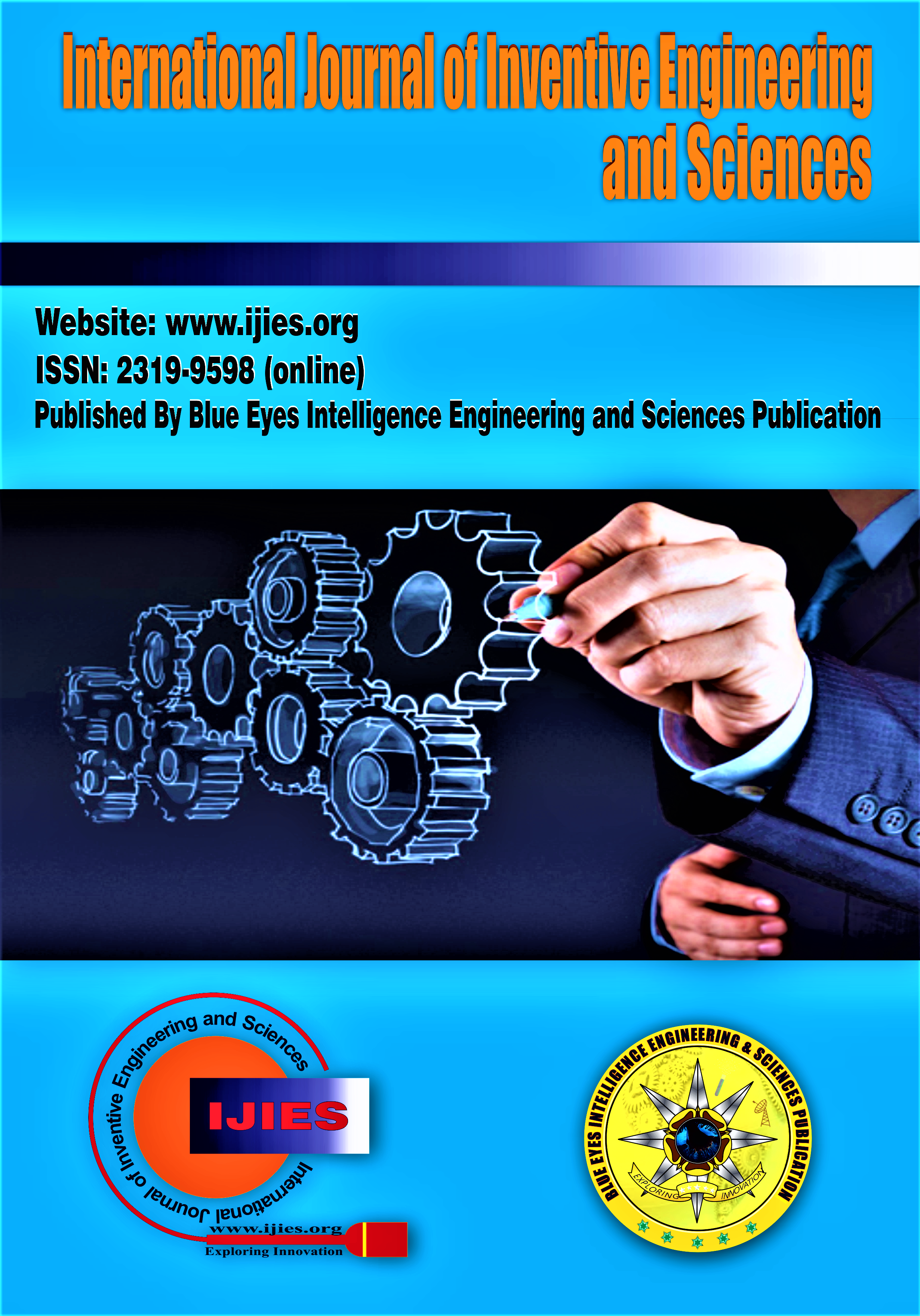Fiber-Reinforced Polymers in Structural Design: A Comprehensive Insight of Innovations, Performance, and Future Prospects
Main Article Content
Abstract
Fiber-reinforced polymers (FRP) have emerged as a transformative technology in structural design, offering enhanced durability, improved load-bearing capacity, and superior seismic performance compared to conventional reinforcement systems. This review provides a comprehensive insight into the innovations, performance, and future prospects of FRP applications in modern construction. The study critically examines FRP systems from a multi-scale perspective, integrating nano-enhancements at the fiber-matrix interface, mesoscale structural arrangements, and macro scale behavior under external loads. A rigorous methodological framework was adopted, combining extensive literature review, advanced computational simulations, and laboratory experiments. Experimental investigations focused on assessing load transfer mechanisms, debonding phenomena, and durability under cyclic and dynamic loading conditions, which are critical for seismic resilience. Finite element analysis and other numerical modeling techniques were employed to simulate the long-term performance of FRP-enhanced structures and to predict failure modes under diverse environmental and loading scenarios. These approaches enabled a detailed characterization of the structural behavior, bridging the gap between micro structural enhancements and overall system performance. The findings of this research reveal that innovative bonding techniques, surface treatments, and the incorporation of nano-scale materials significantly improve the interface properties and overall integrity of FRP systems. Multiscale modeling has demonstrated efficacy in elucidating the intricate interactions among the fiber, matrix, and interfacial zone, consequently facilitating a more comprehensive understanding of performance improvements. The study underscores that the integration of FRP in structural design not only optimizes strength and serviceability but also offers a sustainable alternative with potential reductions in maintenance costs and environmental impact. The research is significant because it lays the groundwork for standardized testing protocols and future investigations into eco-friendly FRP materials, thus addressing key challenges in durability, cost, and fire resistance. In summary, this comprehensive investigation not only advances our understanding of FRP innovations and performance but also charts a clear path for future research directions, ensuring that FRP systems continue to evolve and meet the demands of modern, resilient infrastructure.
Downloads
Article Details
Section

This work is licensed under a Creative Commons Attribution-NonCommercial-NoDerivatives 4.0 International License.
How to Cite
References
ACI Committee 440. (2017). Guide for the design and construction of externally bonded FRP systems for strengthening concrete structures (ACI 440.2R-17). American Concrete Institute. DOI: Not available Retrieved from the American Concrete Institute website
Hollaway, L. C., & Teng, J. G. (2008). Innovative applications of composite materials in civil infrastructure. Composites Part B: Engineering, 39(5), 597–609. DOI: https://doi.org/10.1016/j.compositesb.2007.11.015
Rafiee, M., & Nalbantoglu, J. (1998). Development of a new generation of FRP materials for concrete strengthening. Journal of Structural Engineering, 124(3), 275–283. DOI: http://dx.doi.org/10.1007/978-3-319-59471-2_101
Park, R., Paulay, T., & Shin, J. (2003). Bond behavior of FRP composite laminates on concrete structures. Journal of Composites for Construction, 7(4), 279–286. https://www.researchgate.net/publication/240638828_Bond_of_FRP_laminates_to_concrete
Xiao, J., Teng, J. G., & Li, V. C. (2004). Bond behavior of FRP-to-concrete interface: A review. Engineering Structures, 26(3), 427–437. DOI: http://dx.doi.org/10.1016/j.conbuildmat.2015.03.031
Zhang, Y., Wang, X., & Liu, J. (2017). Nano-enhanced fiber-reinforced polymer composites: A review of recent advances and applications. Composite Structures, 165, 411–423. DOI: https://doi.org/10.1016/j.compstruct.2017.03.048
Liu, M., Chen, X., & Li, Z. (2018). Hybrid fiber reinforcement in composite materials: Balancing cost and performance. Journal of Composite Materials, 52(10), 1321–1333. DOI: http://dx.doi.org/10.1177/0731684413516393
Kim, S., & Lee, J. (2019). Development of advanced epoxy resins for improved durability in FRP systems. Polymer Engineering & Science, 59(3), 510–517. DOI: https://doi.org/10.1002/pen.24762
Brown, T., Davis, R., & Miller, S. (2020). Tailored fiber architectures in composite materials: A review of recent trends. Composites Science and Technology, 189, 107966.
Smith, D., Nguyen, P., & Wilson, J. (2019). Multi-scale modeling of FRP composites: Recent developments and future prospects. Computers & Structures, 211, 1–12. DOI: https://doi.org/10.1016/j.compstruc.2018.12.001
Garcia, H., Patel, R., & Kumar, S. (2020). Sustainable FRP composites: Eco-friendly resins and recyclable systems. Journal of Cleaner Production, 275, 122816. DOI: https://doi.org/10.1016/j.jclepro.2020.122816
Jawed Qureshi. (2022) .A Review of Fibre Reinforced Polymer Structures. Fibers Volume 10, Issue 3. DOI: https://doi.org/10.3390/fib10030027
Farzin Kazemi 1 · Neda Asgarkhani. (2024). Machine‑Learning Methods for Estimating Performance of Structural Concrete Members Reinforced with Fiber‑Reinforced Polymers. Archives of Computational Methods in Engineering (2025) 32:571–603. DOI: https://doi.org/10.1007/s11831-024-10143-1
Venkategowda, T., & L H, Dr. M. (2019). Effect of Fiber Loading on Mechanical and Physical Properties of Uniaxial Long Kenaf Bast Fiber Reinforced Epoxy Composites. In International Journal of Recent Technology and Engineering (IJRTE) (Vol. 8, Issue 4, pp. 12224–12229). DOI: https://doi.org/10.35940/ijrte.d8850.118419
Kumar, T. N., Murali, B., & Arulmani, J. (2019). Machining Characteristics of Natural Fiber Particle Reinforced Polymer Composite Material using Artificial Neural Network. In International Journal of Innovative Technology and Exploring Engineering (Vol. 8, Issue 9, pp. 3350–3354). DOI: https://doi.org/10.35940/ijitee.i8957.078919
Jumahat, A., Haris, N. A., & Mohamad, F. N. C. (2019). Slurry Pot Erosion Wear of Nanoclay M odified Short Fiber Reinforced Polymer (SFRP) Composites. In International Journal of Engineering and Advanced Technology (Vol. 9, Issue 1, pp. 5832–5838). DOI: https://doi.org/10.35940/ijeat.a3013.109119
Bhardwaj, S. (2023). Evolutionary Algorithms for Optimization of Drilling Variables for Reduced Thrust Force in Composite Material Drilling. In International Journal of Soft Computing and Engineering (Vol. 13, Issue 2, pp. 14–18). DOI: https://doi.org/10.35940/ijsce.b3610.0513223





